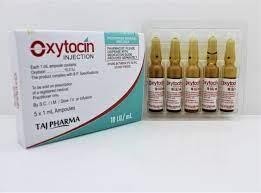A nurse is reviewing the results of a 1-hr glucose screening test for a client who is at 24 weeks of gestation. The client's glucose value is 130 mg/dL. Which of the following actions should the nurse take?
Schedule the client for a routine 1-month appointment.
Instruct the client to return for a 3-hr oral glucose tolerance test.
Have the client perform home glucose monitoring for 1 week.
Repeat the 1 hr glucose testing in 1 week.
The Correct Answer is B
A) Incorrect- Scheduling a routine 1-month appointment is not appropriate given the elevated glucose value. A 1-hour glucose screening test value of 130 mg/dL indicates an elevated glucose level, which suggests the need for further testing to confirm or rule out gestational diabetes.
B) Correct - An elevated glucose value on the initial screening test requires confirmation through a more comprehensive test, such as the 3-hour oral glucose tolerance test.
C) Incorrect- Home glucose monitoring might be indicated for gestational diabetes but is not the next step after an elevated 1-hour glucose screening test.
D) Incorrect- Repeating the 1-hour glucose test in 1 week is not necessary; if the initial test is elevated, further testing is required.
Nursing Test Bank
Naxlex Comprehensive Predictor Exams
Related Questions
Correct Answer is C
Explanation
A) Incorrect- Elevated blood pressure is not a primary risk associated with hyperemesis gravidarum.
B) Incorrect- Leukopenia (low white blood cell count) is not a common consequence of hyperemesis gravidarum.
C) Correct - Hyperemesis gravidarum, severe nausea, and vomiting during pregnancy can lead to dehydration, which may affect amniotic fluid levels and result in hydramnios (excessive amniotic fluid).
D) Incorrect- Ketonuria (presence of ketones in the urine) is a possible consequence of excessive vomiting, but it's not the primary concern associated with hyperemesis gravidarum.
Correct Answer is C
Explanation
A) Incorrect- Nifedipine is a calcium channel blocker used for conditions like high blood pressure, not for controlling postpartum bleeding.
B) Incorrect- Terbutaline is a bronchodilator and is not typically used for postpartum bleeding.
C) Correct - Oxytocin is a uterotonic medication often used to control excessive bleeding after childbirth. It helps the uterus contract and reduces the risk of postpartum hemorrhage.
D) Incorrect- Betamethasone is a corticosteroid used to enhance fetal lung maturity when given to pregnant clients at risk of preterm birth

Whether you are a student looking to ace your exams or a practicing nurse seeking to enhance your expertise , our nursing education contents will empower you with the confidence and competence to make a difference in the lives of patients and become a respected leader in the healthcare field.
Visit Naxlex, invest in your future and unlock endless possibilities with our unparalleled nursing education contents today
Report Wrong Answer on the Current Question
Do you disagree with the answer? If yes, what is your expected answer? Explain.
Kindly be descriptive with the issue you are facing.
